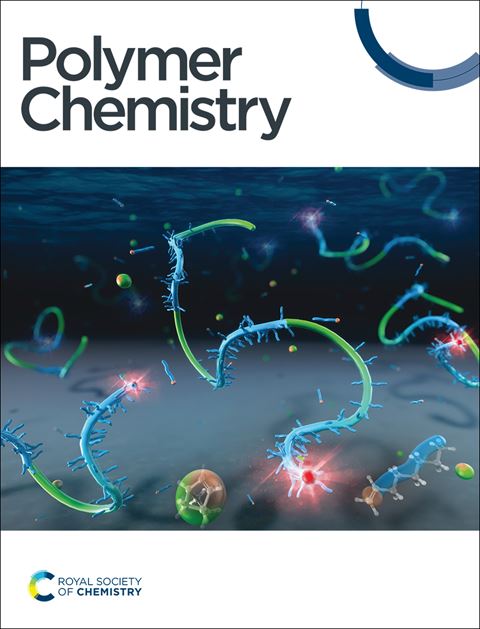Tailoring Polyester Based-Diblock Copolymers for Boron-Enhanced Drug Delivery: Synthesis, Kinetics, and Nanoparticle Characterization
IF 4.1
2区 化学
Q2 POLYMER SCIENCE
引用次数: 0
Abstract
Here, we present the synthesis of diblock copolymers of poly(ethylene glycol) methyl ether-b-poly(ε-caprolactone) (mPEG-b-PCL) with prop-2-ynyl (propargyl) substituents on ε-caprolactone (ε-CL) units. The copolymerization of ε-CL with its propargylated derivative initiated by mPEG, followed by a thiol-yne click reaction with 1-thioglycerol, results in copolymers featuring vicinal diols capable of reversibly binding boronic acid derivatives. Detailed kinetic experiments were conducted to monitor the homo- and copolymerization of ε-CL with 7-(prop-2-ynyl)oxepan-2-one. By analyzing the kinetic data, we calculated copolymerization parameters and mapped the composition profile of the resulting copolymers. The resulting gradient copolymers exhibited a lightly tapered composition profile, with an increase in ε-CL consumption at higher conversions where the more reactive 7-(prop-2-ynyl)oxepan-2-one is almost depleted. These findings were further validated through quantum chemical calculations, providing insights into the precise structure and composition of the copolymers. Characterization of the self-assembled nanoparticles was performed using static and dynamic light scattering, and their morphology was visualized via conventional and cryogenic transmission electron microscopy, confirming the formation of small, homogeneous spherical micelles. To demonstrate their potential in drug delivery, we encapsulated a model drug composed of phenylboronic acid and metallacarborane cluster into the micelles and investigated the impact of drug loading on their properties. Our comprehensive study underscores the importance of precise synthesis and structural prediction in the development of biodegradable diblock copolymers, offering valuable insights into their synthesis, kinetic behavior, and nanoscale assembly for advanced drug delivery applications.求助全文
约1分钟内获得全文
求助全文
来源期刊

Polymer Chemistry
POLYMER SCIENCE-
CiteScore
8.60
自引率
8.70%
发文量
535
审稿时长
1.7 months
期刊介绍:
Polymer Chemistry welcomes submissions in all areas of polymer science that have a strong focus on macromolecular chemistry. Manuscripts may cover a broad range of fields, yet no direct application focus is required.
 求助内容:
求助内容: 应助结果提醒方式:
应助结果提醒方式:


